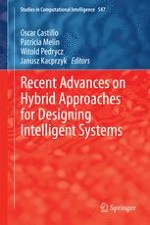This book describes recent advances on hybrid intelligent systems using soft computing techniques for diverse areas of application, such as intelligent control and robotics, pattern recognition, time series prediction and optimization complex problems. Soft Computing (SC) consists of several intelligent computing paradigms, including fuzzy logic, neural networks and bio-inspired optimization algorithms, which can be used to produce powerful hybrid intelligent systems. The book is organized in five main parts, which contain a group of papers around a similar subject. The first part consists of papers with the main theme of type-2 fuzzy logic, which basically consists of papers that propose new models and applications for type-2 fuzzy systems. The second part contains papers with the main theme of bio-inspired optimization algorithms, which are basically papers using nature-inspired techniques to achieve optimization of complex optimization problems in diverse areas of application. The third part contains papers that deal with new models and applications of neural networks in real world problems. The fourth part contains papers with the theme of intelligent optimization methods, which basically consider the proposal of new methods of optimization to solve complex real world optimization problems. The fifth part contains papers with the theme of evolutionary methods and intelligent computing, which are papers considering soft computing methods for applications related to diverse areas, such as natural language processing, recommending systems and optimization.
